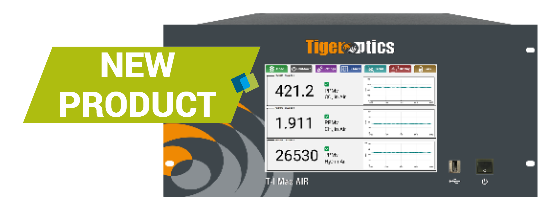Atmospheric & Air Quality
REAL-TIME SOLUTIONS FOR Atmospheric & Air Quality
Addressing Air Quality and Climate Change
- Human health
- Environmental sustainability
- Economic stability
- Air pollution, in particular, poses severe health risks.
- Plant and animal ecosystem
- Infrastructure
- Crop yields and food production
The Need for Real-Time Air Quality Monitoring Solutions
- Continuous measurement and tracking of air pollutant concentrations
- Timely and accurate information about prevailing air quality conditions
- Identification of pollution sources
- Implementation of effective control measures
- Protection of public health and the environment
Protecting Human Health through Air Quality Monitoring
- Identify harmful pollutants and their concentrations
- Inform health advisories and protective measures for vulnerable populations

SALES | TRAINING INQUIRIES
AMERICAS: info.americas@process-insights.com
EMEAI (includes India): info.emeai@process-insights.com
APAC: info.apac@process-insights.com
CHINA: info.cn@process-insights.com
FEATURED PRODUCTS
MAX300-TGM™ TOXIC GAS MONITOR
Real-Time Toxic Gas Monitoring Solution in Ambient Air
Our NEW EXTREL™ MAX300-TGM™ Toxic Gas Monitor is a real time monitoring solution with analysis speeds of 0.4 seconds per chemical and gas clearing times of less than 3 seconds. These impressive speeds exceed industry requirements for continuous monitoring. With the ability to analyze 15+ chemicals per sample point, the MAX300-TGM toxic gas analyzer provides maximum efficiency at an extremely low cost-per-chemical, per sample point.
MAX300-TGM Advantages Include:
- Versatile and flexible analyzer – detect multiple chemicals on up to 46 sample points
- Fast measurement with high sensitivity, reducing false alarms
- Highly responsive to changes in chemical concentration – reducing down time after an event
- Streamlined operation – centralized analyzer for full facility monitoring
- Low cost of ownership and streamlined operation – decreasing complexity in maintenance and upkeep
- Industry leading application expertise and technical support with decades of experience with ambient air monitoring
- Large, user-friendly touch screen interface for at-a-glance updates with customizable alarm verifications
T-I MAX AIR™ ENVIRONMENTAL MONITORING SOLUTION
Greenhouse Gas Monitoring At Its Best
Elevate your environmental monitoring with the new TIGER OPTICS™ T-I Max AIR™ Cavity Ring-Down Spectroscopy (CRDS) Gas Analyzer from Process Insights. This cutting-edge analyzer delivers continuous, real-time monitoring of CO2, CH4, and H2O, making it an optimal solution for reporting mole fraction and monitoring atmospheric greenhouse gases. DOWNLOAD T-I MAX AIR_Data Sheet
Utilizing our TIGER OPTICS Cavity Ring-Down Spectroscopy Technology, a sensitive measurement technique meeting the requirements and standards of the World Meteorological Organization (WMO), the T-I Max AIR complies with stringent traceability and precision standards crucial for major national reference labs. Its exceptional precision measures atmospheric concentrations for each analyte in parts-per-billion (ppb).
Capable of accurately reporting dry mole fraction, the T-I Max AIR integrates into a compact footprint that is both robust and cost-effective. Its resilience to common interferences solidifies its reputation as a consistently reliable choice for air quality and greenhouse gas monitoring. Experience the advantages of low ownership costs and easy user-friendly operation with the T-I Max AIR – eliminating the need for regular sensor replacement or maintenance.


